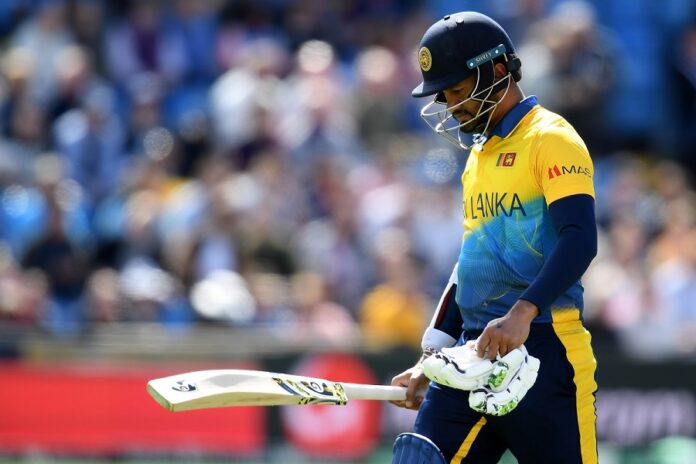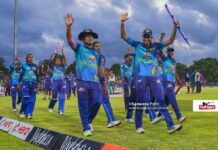So, it’s done. After weeks of speculation, Sri Lanka Cricket have finalized their squad for the 3 ODIs in Bangladesh – confirming rumours of a new selection strategy which will see a complete overhaul in the team’s leadership in limited overs cricket.
Sri Lanka’s new selection committee, headed by Pramodya Wickramasinghe, have decided to make a call to drop a number of senior players from the ODI team, including former captains Dimuth Karunaratne and Angelo Mathews. Here’s why it may not be the worst idea ever.
Sri Lanka’s performance since 2000
It’s no secret that Sri Lanka’s performances across formats have dipped during the last 5 years, particularly after the retirements of stalwarts like Kumar Sangakkara, Mahela Jayawardene and TM Dilshan. Certainly, you would expect any team to experience a period of transition after the loss of players of that calibre, but Sri Lanka’s numbers over the past 5 years don’t seem to be showing any signs of improvement.
One of the reasons for this is the seeming inability to keep up with the evolution of limited overs cricket, with the selections, team strategy and ability to execute, based on past success.

Have a look at the graph above, while Sri Lanka had managed to keep pace with England and India in ODI cricket for the most part since the year 2000 (Australia have been dominant for much of the period in question – no comparisons there), the story has been different in the most recent years. Notably, since 2014, Sri Lanka has been on a continuous downward trend, while England and India have gone in the opposite direction.
Of course, the resources available to the countries are vastly different, these are the ‘Big 3’ after all, but what have these countries done, to take them ahead of the game, while leaving countries like Sri Lanka behind?
The English model
England had a terrible World Cup in 2015. Granted, they did not come into the tournament as favourites or anything like that, but many would have expected them to at least make it past the group stage. But instead, they bombed spectacularly, losing to Australia, New Zealand and Sri Lanka before being dumped out of the tournament by Bangladesh.
But it’s what happened next that we are really interested in. England was always a country that prioritized Test cricket over limited overs cricket. But, newly appointed Director of Cricket Andrew Strauss realized that this would need to change if they hoped to make a mark at the 2019 World Cup at home.
He started at the top and what followed was a complete revolution in English Cricket. Trevor Bayliss and Eoin Morgan took up the leadership positions and the ethos of the team was transformed. They picked players for whom aggressive intent came naturally and who were not afraid to play their game even when backed into a corner and in trouble.
They had 3 key areas of focus,
- Attacking batsmen – particularly at the top of the order. This was a key aspect of their growth, particularly with the change in fielding restriction rules in July 2015, which got rid of the batting powerplay and allowed an extra fielder outside the circle in the last 10 overs of an innings. This meant that the 1st 10 overs were when the boundaries were least protected and so the need to go hard early in the innings became even more pronounced.
- Picking up wickets in the middle overs – Adil Rashid was a game changer for England on this. The leg-spinner had been around for a while but seemed to finally find his place in Eoin Morgan’s new England. Rashid’s 155 wickets since the 2015 World Cup are the most by a spinner – giving England yet another option of being attacking. The bid to take wickets in the middle overs also saw the emergence of Liam Plunkett, Mark Wood, Ben Stokes and Jofra Archer as real forces in ODI cricket.
- Fielders attacking the ball – All out attack, that was England’s strategy – so why limit it to just batting and bowling? The players were asked to push the same intensity they had while batting and bowling to their fielding as well. It was the intent that mattered and it had a marked effect on England’s ground fielding.
Of course, this strategy is one that can backfire and backfire badly. And it did for England, in a high stakes game no less, the 2017 Champions Trophy semi-final against Pakistan. They still finished the tournament with the highest RPO in the 1st 10 overs (6.24), highest RPO against spin in the ‘middle overs’ 11-40 (5.84) and highest boundary ball percentage in the last 10 overs (15.23%). Most importantly, they didn’t abandon this strategy after the disappointment in the tournament and ended up achieving their goal of winning the Cricket World Cup two years later.
Taking a leaf out of the English book
So, we’ve seen what England did in the 4 years of lead-up into the 2019 World Cup, but what steps can Sri Lanka take to emulate their success?
With fewer numbers of Tests played, Sri Lanka’s primary focus has always been limited overs cricket and the country enjoyed a lot of success in the years following the 1996 World Cup win. But, by 2015, as the game evolved, Sri Lanka were on the way down in ODIs, where their path intersected with England’s. Since then, the two teams have gone in opposite directions, England has reached continuous highs, while Sri Lanka have sunk to their lowest in this millennium.
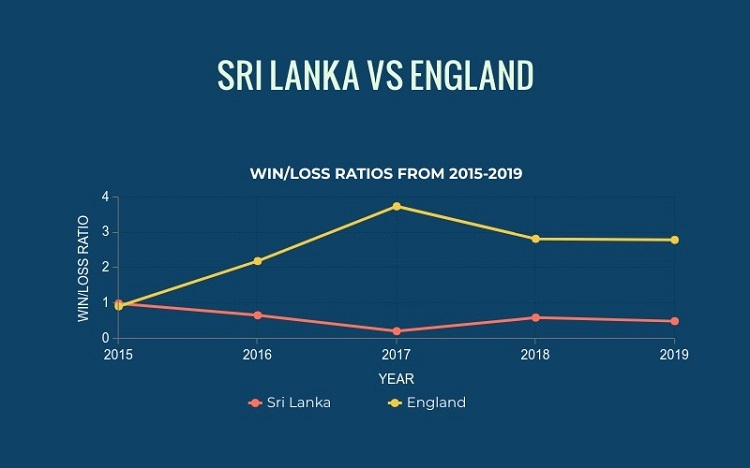
England’s transformation started with some difficult decisions regarding personnel. Alastair Cook, Stuart Broad, James Anderson. Three players, who, at the time would have been considered the ‘seniors’ of England’s ODI setup.
Well… Cook was the first victim of the overhaul – in fact, he was gone even before the 2015 World Cup started. Now, Cook’s record in ODI cricket isn’t terrible. He had over 3,000 runs at an average of 36+ when he was dropped. With a strike-rate in the 70s, he just wasn’t going to fit into England’s plans. Their drive to bring in limited overs specialists saw to Broad and Anderson too. I mean, Anderson had 269 wickets at average of 29 and economy rate less than 5 and he still didn’t play a single ODI after the 2015 World Cup.
Instead of these three, they brought in guys like Jason Roy, Alex Hales, Jonny Bairstow, Chris Jordan and Liam Plunkett, guys who would force things to happen and whose playing style was what Morgan and Bayliss wanted England to build on.
The change was almost immediate, the results eye-opening. In their first game after the 2015 World Cup exit, England smashed 408/9 against New Zealand, their highest total in ODI cricket at the time. Then they bowled New Zealand out for 198 to register their biggest margin of victory at the time.
England have crossed 400 3 times since then and gone past 300 48 times in 107 innings since their World Cup exit. More importantly, the success of their overall transformation is undeniable as evidenced by the fact that England are on top of the pile in terms of win/loss ratio since the World Cup among countries who have played more than 50 ODIs during the period.
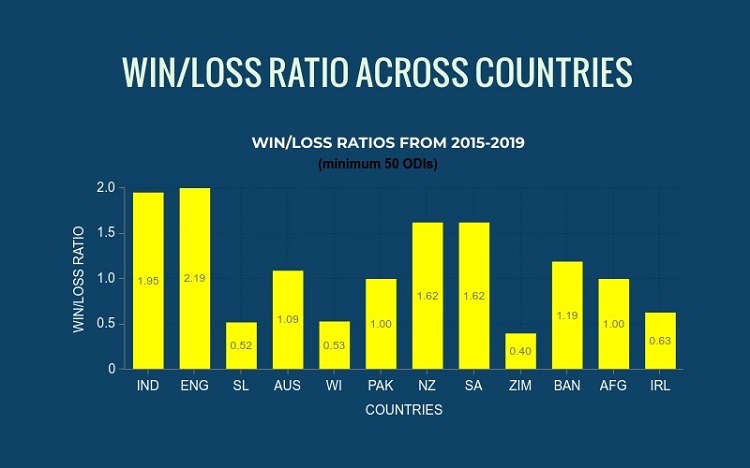
The stats on England’s rise are endless as much as they are telling, but is Sri Lanka paying attention?
They may have taken one small step in the right direction by leaving out as many as 7 senior players from the ODI squad due to travel to Bangladesh – Dimuth Karunaratne, Angelo Mathews, Dinesh Chandimal, Thisara Perera (technically retired before getting dropped), Lahiru Thirimanne, Nuwan Pradeep and Suranga Lakmal.
Since the 2015 World Cup, Sri Lanka have had 7 batsmen play more than 10 innings opening the batting. All of them have averages in the mid 30s, but only one of them has a strike rate below 80 – Dimuth Karunaratne. When Karunaratne was appointed Captain in February 2019, despite not having played an ODI in years, it was more to give leadership to a team in disarray, than for his batting. But, to be fair, he exceeded expectations on both fronts. Under his captaincy, Sri Lanka have won 10 of their last 17 games, certainly an improvement. But, with the likes of Kusal Perera, Danushka Gunathilake, Avishka Fernando and Niroshan Dickwella all in the mix to secure a spot at the top of the order, is he still a first choice opening option for Sri Lanka?
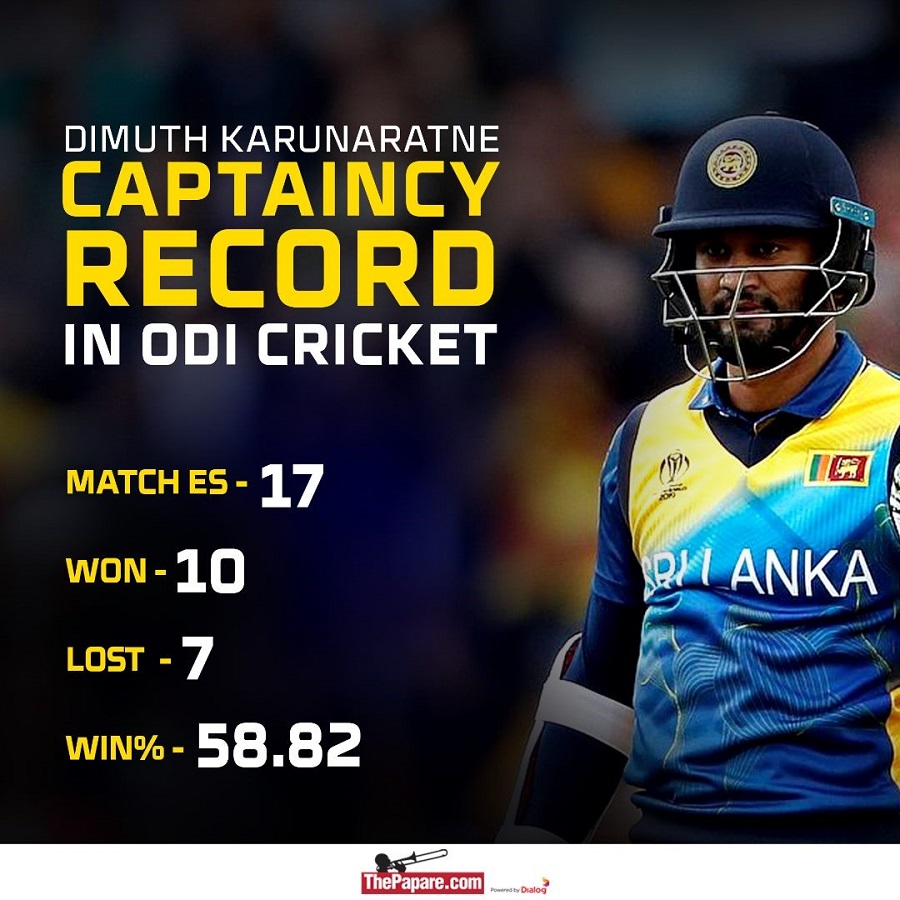
Moreover, is it affecting his performance in Test Cricket? After scoring a maiden double century in Sri Lanka’s most recent Test series against Bangladesh, Karunaratne said, “In the West Indies I was trying to score runs quickly in the first few overs and really get among the runs….I tried to leave the ball a lot when I started here, and properly get settled,” – perhaps an indication that the instinct to score quickly was creeping into his Test game, leading to him being dismissed early, playing away from his body (Sri Lanka went into a 2-match Test series in West Indies straight after 3 ODIs between the sides)
So, while Sri Lanka have a few options to take his place in ODI cricket, they would want to do everything in their power to keep Dimuth Karunaratne, the Test batsman, at his absolute best and if that means pushing him back to being a Test specialist, then so be it.
Now, Angelo Mathews, is perhaps the only one of the 7 whose omission is a little hard to understand. Mathews, the batsman, has been pretty good, he’s had 4 of his best years from 2016-2019, got fitter when his fitness was questioned and started bowling again too. Perhaps the only thing going against him is the fact that by the time the 2023 World Cup rolls by, he will be 36 years old and no matter how fit he gets, there are always going to be doubts about whether he will be able to stay injury free.
The team management has reportedly made it clear to the players that the door is not closed on their return, but the message is clear – change is coming.
Planning for 2023
The next ODI World Cup is in 2023 – it may seem like a long way off, but with FTPs messed up and the teams being forced to reschedule or cancel tours due to the pandemic, there is uncertainty whether teams like Sri Lanka will be able to play as many games as they would have in the past, during the next 2 years. If winning in 2023 is the goal, then there’s no better time to start planning than now.
Again, it might be a good idea to look at some of the plans England followed.
England’s analysts came up with the following on what points translated to success at World Cups, according to The Telegraph,
– Being the hosts nation was a significant advantage
– The Team strike-rate
– Win/Loss ratio
– Total Caps
– Average Caps per player (70-80)
Though hosting is out of anyone’s control now, the other 4 aspects are some things that can be looked at. Sri Lanka’s RPO since the 2015 World Cup is ranked 8th among countries who have played more than 50 games during that period and its win/loss ratio is ranked 11th.
In terms of total caps and average caps per player, Sri Lanka will need to be careful who they pick in order to give those players a long enough time to buy into new strategies as they build towards the World Cup. This could be particularly tricky, considering the number of players Sri Lanka blood at the international level.
The management needs to be looking at ticking these boxes, if they have any hope of consistent success in the coming years.
Of course, planning is one thing, but execution is what will ultimately make or break Sri Lanka’s strategy. With 9 ODIs to go to decide if Sri Lanka will have to go through qualifiers to make it to the 2023 World Cup, the stakes are high.
It is a risk, taking a relatively inexperienced side to Bangladesh, but perhaps a necessary risk, if Sri Lanka have any plans to be a threat the 2023 World Cup.

